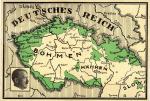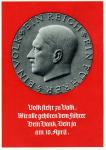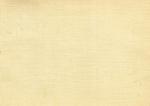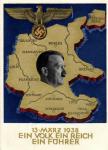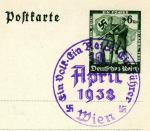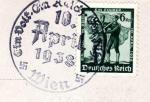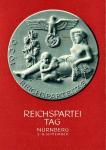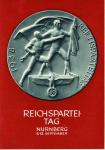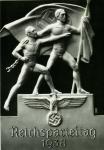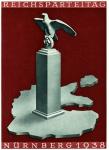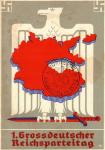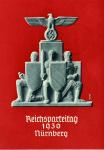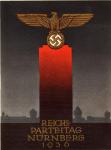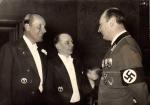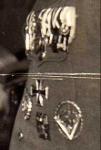-
Posts
2,143 -
Joined
-
Last visited
-
Days Won
10
Content Type
Profiles
Forums
Blogs
Gallery
Events
Store
Everything posted by Odulf
-
According to the Treaty of Versailles, between 1920 and 1923 many border regions of both Austria and Germany, with a mixed population, were granted a plespecite to define about the nationality of its inhabitants. In some regions this caused reasons for locals to take up arms against the seperatists, but also for Freecorps to intervene. Both sides issued postcards and paper money to stress their point. This postcard was sold to support the Germans who wanted Upper Silesia to remain German.
-
The leader of the Sudetendeutsche was Dr.jur. h.c. Konrad Ernst Eduard Henlein (06.05.1898 - 10.05.1945), who commited suicide in U.S. internment near Pilsen. After the unification he became Gauleiter of the Reichsgau Sudetenland within the NSDAP, but he held other offices and ranks also. On 09.10.1938 he joined the Allgemeine-SS as honorary SS Leader, and wore the uniform of an SS-Gruppenführer.
-
Next up for unification was the Sudetenland, on 4 October 1938, after severe German pressure on the International Powers, German troops crossed the borders with Chechoslovakia to annex the Sudetenland. This propaganda card shows the territorries which fell to Germany [the rest of Böhmen und Mähren, was soon to follow], Slovakia remained independent... the stamp is Chechoslovakian, but with an overstamp Aberthum 4.X.38, postage stamp: "Breitenbach im befreiten Sudetenland" (Breitenbach in liberated Sudetenland).
-
After the final unification of Austria and Germany under one leader, this postcard was presented (with both Austrian and German stamps and postage markings) to commemorate the new status of both countries and also in commemoration of Hitler's birthday [as if the unification was a birthday present...]
-
After the Treaty of Versailles Germany and Austria lost many territorries, and almost instantly the general opinion was mobilized to resist. Between 1919 and 1939, in the territories due to be seperated all sorts op propagandistic actions were started to influence the plesbecites (referenda) which would decide upon the future of these areas. Not only postcards were used, but also local money (as it became a sort of auxilliary currency due to the lack of metal coins) to express the feelings of propagandists. This thred shows examples of both (als long as it is in paper). Starting off with a propaganda postcard for the plesbecite about the reunification with the Saarland, which had been under French occupation for long.
-

NSDAP Reichsparteitage
Odulf replied to Odulf's topic in Germany: Third Reich: Research, Documentation & Photographs
Excellent cards. For which of the Reichsparteitage are your contributions John? -

NSDAP Reichsparteitage
Odulf replied to Odulf's topic in Germany: Third Reich: Research, Documentation & Photographs
1939, this event was subtitled "Reichsparteitage des Friedens" (Party days of Peace!), but due to the attack on Poland and the beginning of the war they were cancelled. -

NSDAP Reichsparteitage
Odulf replied to Odulf's topic in Germany: Third Reich: Research, Documentation & Photographs
-

NSDAP Reichsparteitage
Odulf replied to Odulf's topic in Germany: Third Reich: Research, Documentation & Photographs
1938, another. This picture is also found on the three medals for the Anschluss of Austria, Sudetenland and Memelgebiet. -

NSDAP Reichsparteitage
Odulf replied to Odulf's topic in Germany: Third Reich: Research, Documentation & Photographs
-

NSDAP Reichsparteitage
Odulf replied to Odulf's topic in Germany: Third Reich: Research, Documentation & Photographs
-

NSDAP Reichsparteitage
Odulf replied to Odulf's topic in Germany: Third Reich: Research, Documentation & Photographs
-

NSDAP Reichsparteitage
Odulf replied to Odulf's topic in Germany: Third Reich: Research, Documentation & Photographs
-

NSDAP Reichsparteitage
Odulf replied to Odulf's topic in Germany: Third Reich: Research, Documentation & Photographs
-

NSDAP Reichsparteitage
Odulf replied to Odulf's topic in Germany: Third Reich: Research, Documentation & Photographs
-
The Reichsparteitage of the NSDAP were the ultimate display of unity for the Party and it's organizations. In the Tinny Forum many of the paticipants' and donation badges are on display, but the events were also a show of propaganda. Therefore I would like to start a topic about the propaganda postcards and postage stamps for the Reichsparteitage. Below some of these very colorful and attractive specimen of print.
-

Schlesischer Adler / Silesian Eagles
Odulf replied to dond's topic in Germany: Weimar Republic & Deutsche Freikorps
-

Schlesischer Adler / Silesian Eagles
Odulf replied to dond's topic in Germany: Weimar Republic & Deutsche Freikorps
-
I'm sorry Rostyslav, there is little to none information about these uniforms. I had it verified through two collectors of brass buttons, who recognised the Telefunken buttons and thus confirmed my educated guess. When wireless communications were introduced, the companies who produced these new and very complicated contraptions, also trained the operators. They were placed on board large ocean going ships as communications officers, but with a special status. Usually they wore some sort of simple uniform, to distinguish them as part of the ship's complement, but they had no other status than their responsibility for the "wireless hut". Perhaps information can be had from the Telefunken Archives in Germany.






